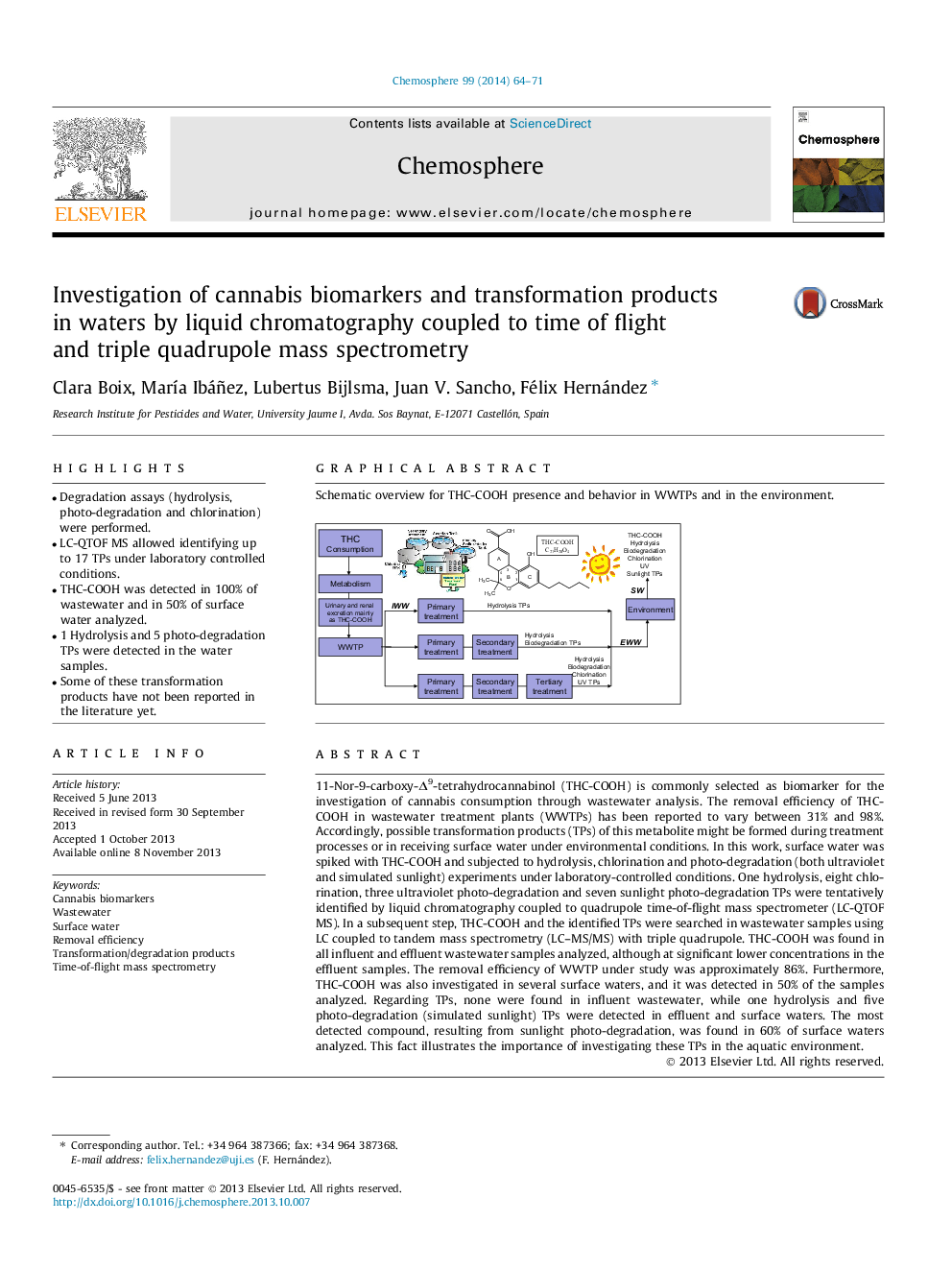| کد مقاله | کد نشریه | سال انتشار | مقاله انگلیسی | نسخه تمام متن |
|---|---|---|---|---|
| 4408927 | 1618872 | 2014 | 8 صفحه PDF | دانلود رایگان |
• Degradation assays (hydrolysis, photo-degradation and chlorination) were performed.
• LC-QTOF MS allowed identifying up to 17 TPs under laboratory controlled conditions.
• THC-COOH was detected in 100% of wastewater and in 50% of surface water analyzed.
• 1 Hydrolysis and 5 photo-degradation TPs were detected in the water samples.
• Some of these transformation products have not been reported in the literature yet.
11-Nor-9-carboxy-Δ9-tetrahydrocannabinol (THC-COOH) is commonly selected as biomarker for the investigation of cannabis consumption through wastewater analysis. The removal efficiency of THC-COOH in wastewater treatment plants (WWTPs) has been reported to vary between 31% and 98%. Accordingly, possible transformation products (TPs) of this metabolite might be formed during treatment processes or in receiving surface water under environmental conditions. In this work, surface water was spiked with THC-COOH and subjected to hydrolysis, chlorination and photo-degradation (both ultraviolet and simulated sunlight) experiments under laboratory-controlled conditions. One hydrolysis, eight chlorination, three ultraviolet photo-degradation and seven sunlight photo-degradation TPs were tentatively identified by liquid chromatography coupled to quadrupole time-of-flight mass spectrometer (LC-QTOF MS). In a subsequent step, THC-COOH and the identified TPs were searched in wastewater samples using LC coupled to tandem mass spectrometry (LC–MS/MS) with triple quadrupole. THC-COOH was found in all influent and effluent wastewater samples analyzed, although at significant lower concentrations in the effluent samples. The removal efficiency of WWTP under study was approximately 86%. Furthermore, THC-COOH was also investigated in several surface waters, and it was detected in 50% of the samples analyzed. Regarding TPs, none were found in influent wastewater, while one hydrolysis and five photo-degradation (simulated sunlight) TPs were detected in effluent and surface waters. The most detected compound, resulting from sunlight photo-degradation, was found in 60% of surface waters analyzed. This fact illustrates the importance of investigating these TPs in the aquatic environment.
Schematic overview for THC-COOH presence and behavior in WWTPs and in the environment.Figure optionsDownload as PowerPoint slide
Journal: Chemosphere - Volume 99, March 2014, Pages 64–71
